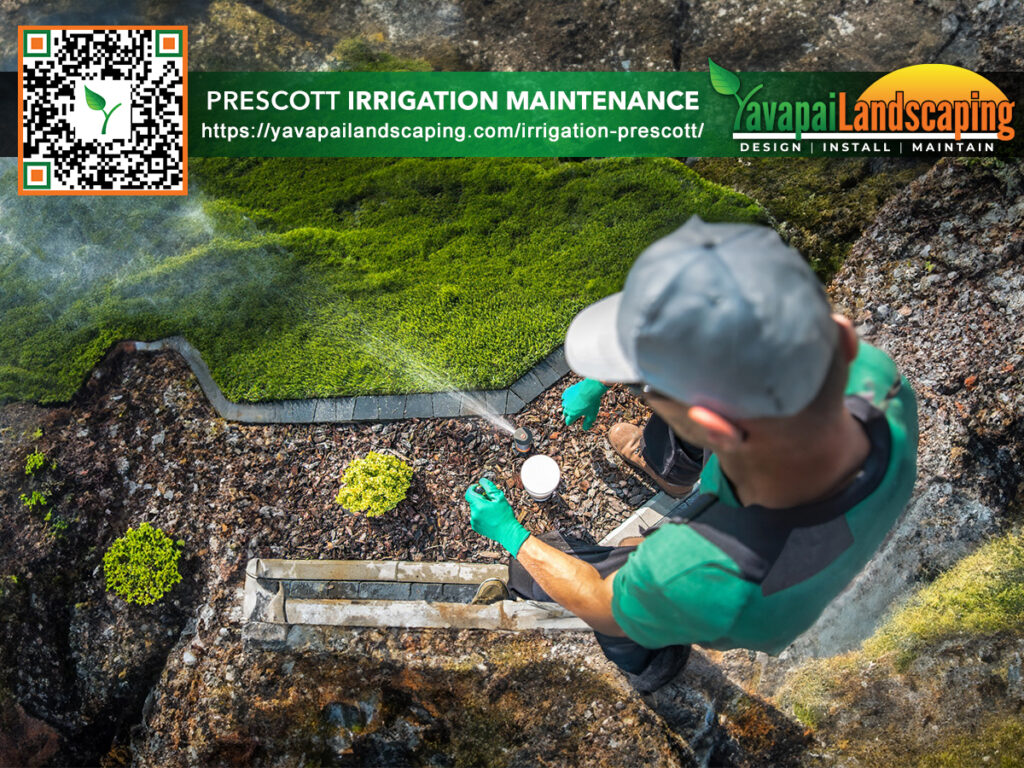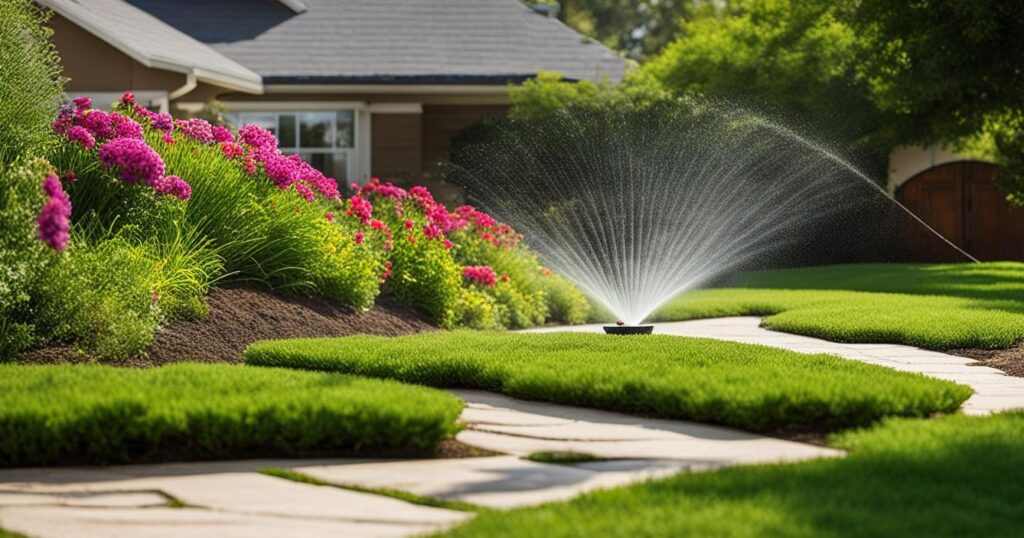
Efficient irrigation requires a quality sprinkler system design, excellent water management skills, and regular system maintenance. Regular irrigation maintenance can prevent wear and tear on system parts and minimize the loss of plants and turf from inappropriate watering. Proper maintenance can result in better water coverage, improved plant growth, and substantial water savings. Customers can save money in the long run by detecting problems before they become bigger and more expensive to fix.
Key Takeaways:
- Efficient irrigation requires quality system design and regular maintenance.
- Regular maintenance prevents wear and tear and minimizes loss of plants and turf.
- Scheduled irrigation maintenance improves water coverage and plant growth.
- Detecting and fixing problems early can save money in the long run.
- Proper maintenance leads to substantial water savings.
Importance of Adjustments and Upgrades in Irrigation Systems
As time goes on, irrigation systems can become misaligned, resulting in water wastage and inefficiency. Therefore, regular adjustments and upgrades are crucial to maintaining proper water coverage, minimizing water loss, and saving money in the long run in Prescott, AZ.
Inspections and adjustments by trained professionals are essential for ensuring that your irrigation system is functioning at its best. These experts have the skills and knowledge to identify any issues and make the necessary adjustments to optimize water usage. By detecting and rectifying problems early on, you can prevent further damage and costly repairs. Discover more about Signs You Need Irrigation Repair and How to Identify Them.
Additionally, upgrading your irrigation system with newer technology can significantly improve its efficiency. Upgrading to modern controllers that take into account local weather forecasts, rain sensors, and temperature measurements can better manage water usage and eliminate unnecessary waste. Retrofitting specific components, such as nozzles, heads, drip irrigation, and sprinklers, can also enhance your system’s efficiency and cost-effectiveness.
Table: Benefits of Adjustments and Upgrades in Irrigation Systems
| Benefits | Description |
|---|---|
| Water Savings | Proper adjustments and upgrades result in reduced water wastage, leading to significant savings in water bills. |
| Improved Plant Health | By ensuring optimal water coverage, adjustments and upgrades promote healthier plant growth and minimize damage caused by over or underwatering. |
| Cost Savings | Regular maintenance and upgrades help detect and fix problems before they escalate, saving money on larger and more expensive repairs. |
| Environmental Impact | Efficient irrigation systems reduce water usage, minimizing the strain on local water resources and contributing to environmental sustainability. |
Efficient Water Use and Best Practices for Irrigation

When it comes to efficient water usage in irrigation, proper zoning is essential. By separating turf and ornamental plants into different irrigation zones, you can meet their distinct water requirements effectively. This strategic approach ensures that each area receives the right amount of water, preventing overwatering or underwatering.
To optimize water usage further, consider utilizing an automatic sprinkler system with a controller. This technology allows you to schedule irrigation based on specific needs and adjust watering duration and frequency as required. Additionally, integrating irrigation shut-off devices, such as rain sensors or soil moisture sensors, can prevent unnecessary watering when sufficient moisture is already present.
Calibrating your sprinkler system is another crucial step in maximizing water efficiency. By measuring the depth of water collected in containers placed around your lawn, you can determine if the correct amount of water is being applied. This process helps avoid water waste and ensures that your landscape receives adequate hydration.
Timing is also a key factor in efficient irrigation practices. The best time to irrigate is early in the morning when temperatures are cooler, allowing for optimal absorption by plant roots and minimizing water loss through evaporation. By following these best practices for irrigation, you can save water, reduce water bills, and maintain healthy, vibrant landscapes.
Yavapai Landscaping Prescott offers no-cost estimates for their landscaping and tree services for Prescott and the neighboring regions. This includes tree elimination, pruning, stump grinding, land clearance, storm clean-up, irrigation services, and emergency tree care.
FAQ
What are the benefits of regular irrigation maintenance?
Regular irrigation maintenance can prevent wear and tear on system parts, minimize loss of plants and turf from inappropriate watering, and result in better water coverage, improved plant growth, and substantial water savings.
How can inspections and adjustments improve irrigation efficiency?
Regular inspections and adjustments by a trained professional can help maintain proper water coverage and accuracy, minimize water loss, and save money by eliminating waste.
How can upgrades improve irrigation efficiency?
Upgrading irrigation controllers to newer technology can improve efficiency by taking into account factors like local weather forecasts, rain sensors, and temperature measurements. Retrofitting components of an irrigation system can also make it more efficient and cost-effective.
Why is it important to zone irrigation systems separately for turf and ornamental plants?
Turf and ornamental plants have different water requirements, so zoning the irrigation system separately ensures that each type receives the appropriate amount of water.
How can an automatic sprinkler system and irrigation shut-off devices optimize water usage?
An automatic sprinkler system with a controller and an irrigation shut-off device, such as a rain sensor or soil moisture sensor, can help optimize water usage by preventing unnecessary irrigation.
How can calibrating a sprinkler system help ensure the correct amount of water is applied?
Calibrating a sprinkler system by measuring the depth of water collected in containers placed around the lawn can help ensure that the correct amount of water is applied and minimize water waste.
When is the best time to irrigate?
It is best to irrigate early in the morning when the temperature allows for proper absorption by roots and evaporation of the leaf blades.
